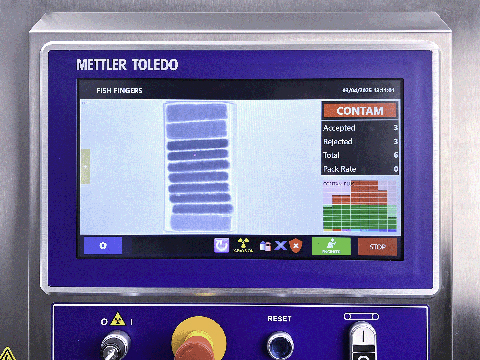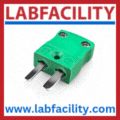
Posted to News on 28th Apr 2025, 09:00
How product inspection technology protects your fish products
In the world of fish products, including fish fingers, cakes, sticks and tenders, the journey from ocean to table is full of rough waves and challenges, but none is more critical than best upholding the safety and quality of the final product, as Miriam Krechlok, segment marketing manager at Mettler-Toledo explains.

Manufacturers in this industry must navigate a complex number of responsibilities, not just to deliver tasty and nutritious products but to also protect the health of their consumers. This involves implementing cutting-edge inspection technologies and maintaining rigorous quality control throughout the entire production process.
Fish manufacturers face a range of challenges in maintaining the quality and safety of their products, particularly when it comes to detecting physical contaminants. A common assumption is that fish blocks, which serve as the raw material for products like fish fingers, cakes, sticks and tenders arrive at production facilities free of bones and other contaminants.
Unfortunately, this assumption does not always hold true. In fact, fish bone foreign bodies (FFB) are the most common type (up to 84%) of ingested foreign bodies encountered in the emergency department around the world. Even the British Queen Mother, in her eighties at the time, had to have an operation to remove a fish bone that was lodged in her throat.
Despite the prominence of fish bone related issues in eating, currently, the inspection of fish blocks often involves manual processes where random samples are thawed and checked for bones or other contaminants. This approach is not only labour-intensive but also time-consuming and can result in significant product waste. Despite the efforts involved, manual inspection is also far from foolproof and contaminants can still slip through, posing serious health risks to consumers. Large or sharp fish bones, for instance, can be a choking hazard, while small metal fragments from processing equipment could lead to injuries or other health issues.
Adding to these operational challenges, fish manufacturers must also adhere to stringent global standards and country-specific regulations. The Codex Alimentarius, which includes the Standard for Quick Frozen Fish Sticks (commonly known as fish fingers in the UK), is one such benchmark that manufacturers must meet. Additionally, they must comply with various other regulations, which often include internationally recognised standards such as IFS (International Featured Standards) and BRCGS Food Safety Global Standard and ISO 22000. These regulations are designed to maintain food safety, protect consumer health and check that products meet market demands.
What's clear is that the responsibility of fish manufacturers extends beyond merely producing a tasty product - though this is, of course, critical. But it involves being sure that all aspects of the production process are designed to prevent contamination and protect consumer health. The implementation of these standards is critical in maintaining brand reputation and avoiding costly recalls or legal issues.
Metal detection and x-ray technologies
So those are the challenges, but how do manufacturers find a solution? Advanced inspection technologies, such as metal detection and x-ray inspection, provide significantly more accurate detection of contaminants than manual inspection processes while also enhancing overall efficiency in the production line.
Metal detection systems are crucial for identifying metal contaminants that may enter the product during processing. For example, small metal chips can break off from cutting blades when slicing frozen fish blocks. These metal fragments pose a serious risk to consumer safety, particularly in unpacked fish fingers, cakes, sticks and tenders and in fish "meatballs" made from scraps left over from the cutting process.
X-ray technology is particularly effective at identifying a wide range of contaminants, including bones, metal fragments, glass and even some types of plastic. It operates by scanning fish blocks or finished products in real-time, identifying any foreign objects based on density differences. This capability is especially valuable for fish manufacturers because x-ray can detect bones even in dense, frozen fish blocks, meaning that any contaminants are identified and rejected from the production line before they can reach the consumer.
To maximise the effectiveness of metal detection and x-ray technologies, it is essential to deploy them at critical stages of the production process. This begins with the inspection of incoming frozen fish blocks, where x-ray technology can be used to detect bones and other contaminants before the fish enters the production process.
Once the fish blocks have been cut and shaped into fish fingers, cakes, sticks and tenders or other products, metal detection systems should be employed to check that no metal fragments are present in the unpacked products, especially from the cutting machines. Following this, a final inspection using x-ray technology should be conducted on the packed fish products to verify that the packaged product is free from any foreign bodies before it is shipped out. Simultaneously, x-ray system completes a large number of quality assurance checks including confirming that the correct number of fish fingers, sticks and tenders are in the packet and that there are no broken products.
Benefits of metal detection and x-ray technologies
The implementation of metal detection and x-ray technologies in the production line offers numerous benefits. By providing comprehensive contamination detection, these technologies help manufacturers' products meet safety standards and protect consumer health. The ability to inspect 100% of the goods, rather than relying on random manual checks, significantly reduces the risk of contamination.
Additionally, the use of metal detection and x-ray technologies allow for the inspection of frozen fish blocks without the need for thawing, thereby reducing product waste and saving up to 15 kilograms of product per batch. This not only helps in reducing overall production costs but also enhances brand security, as manufacturers can confidently market their products as "practically free of bones," in line with consumer expectations and regulatory standards.
By detecting contaminants and removing them before processing, manufacturers protect the quality and value of their finished products, thereby preventing any loss of added value. Most importantly, these technologies protect consumer health by identifying and removing bones and other hazards, which of course, is the main goal of any seafood or fish manufacturer.
The role of data management software in quality assurance
Data management software integrates seamlessly with metal detection and x-ray systems to provide real-time monitoring and reporting. The software can offer fish manufacturers a comprehensive solution for data collection, providing real-time insights into production performance thereby facilitating proactive decision-making and optimising operational efficiency. The information provided by the data management software helps manufacturers to comply with regulatory standards and enhance quality control measures throughout the production process.
In the competitive fish and seafood industry, the ability to detect and remove contaminants from the production line is crucial for maintaining product quality and providing consumers the utmost in safety. By leveraging advanced technologies such as metal detection and x-ray, fish manufacturers can not only meet their regulatory obligations but also enhance their brand reputation and reduce operational costs.
While fish bones may be small, their impact on consumer health and brand trust is significant - making it essential to invest in reliable detection systems. With these technologies in place, manufacturers can future-proof their production line, protect their customers and confidently deliver high-quality fish products especially fish fingers, cakes, sticks and tenders - everyone's favourite teatime treat.






